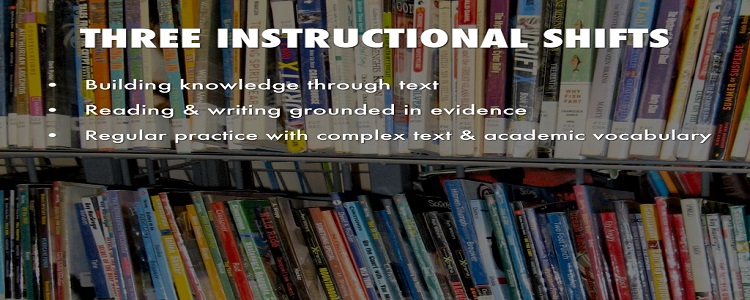Document-Based Argument Writing: Immigration from the Middle East
This is an argument-centered writing assessment designed to develop students’ critical thinking and writing skills, in an in-class and on-demand setting. Both because of the college-directed rigor of the preparatory work that students will be immersed in, and because of the conditions under which students will be writing, this assessment is also highly aligned with the new SAT exam, so it is an authentic, properly embedded and seamless part of an instructional strategy that has raising students’ college exam scores as one of its objectives. And finally it is document-based, so it parallels the kind of AP Exam writing that many students will be striving to master.
Issue: The United States should significantly restrict immigration from the Middle Eastern due to the possibility of terrorism.
READ MORE
‘The Great Gatsby’ and Assessing Student Argumentation
Beatrice exceeds her [cousin] as much in beauty as the first of May doth the last of December.
— Much Ado About Nothing, I.i.185-187
Shakespeare was more than a little in love with the month of May, in Much Ado and elsewhere. Teachers, not so much — despite the narrowing chasm that the month portends to summer and its mostly more relaxed rhythms. The reason for teachers’ coolness toward the “Rose of May” (Hamlet, IV.5.133) can be named in a single word: assessment. May is testing season, and with that comes a flurry of misgivings, about misuse, overuse, curricular de-railment, unwarranted and discouraging final verdicts.
Two New Argument-Based Assessment Samples
Many schools have recently completed their semester-ending final exams. Teachers I was working with yesterday, for instance, told me that they were done with 85% of their essay grading from finals. They reported feeling both a kind of relief that they could see the light at the end of the tunnel, and a surge of motivation to finish, get their grades in, and feel that sense of accomplishment at having fully completed the semester.
This focus on the end of the semester got us thinking about posting on a couple of recent examples of argument-based assessments that we at Argument-Centered Education have developed with our school partners this year. What follows are two samples of assessment tools that have been used recently in our partners’ argument-centered classrooms. These tools can be used or adapted as is – they have been implemented successfully and are ready for wider use – but they can also be taken as models of the ways that argument-based instruction can connect to, generate, and be back-designed from argument-based assessments.
Book Review: ‘Academic Moves for College and Career Readiness’ (Corwin Literacy, 2015), by Jim Burke and Barry Gilmore
From the Outset
Renowned educators and education writers Jim Burke and Barry Gilmore have put together an eminently useful resource binder for teaching what they identify as the most essential “academic moves” in K-12 education: Academic Moves for College and Career Readiness. This study and collection of resources on the “15 must-have skills every student needs to achieve” germinated from the authors’ day-to-day opportunity, they tell us, for reading and reflecting on the problems and prompts handed out to students by their teacher colleagues.
What are we actually asking our students to do in classrooms across disciplines? How do these directions interact with the requirements of current standards such as the Common Core or the new SAT? And how can teachers be assisted in becoming more intentional about teaching the precise academic skills their assignments and assessments demonstrate that they most value? These were the generative questions of the book. Burke and Gilmore wish to bring “consistency and clarity to the language” of school work, “the language of learning.” They quote Argument-Centered Education founding advisers Gerald Graff and Cathy Birkenstein in saying that they intend for their resource binder to lay bare the “‘deep, underlying structure, [the] internal DNA’ common to the academic and cognitive moves” that students must learn to make, across all subject areas.
Three Instructional Shifts: Simplifying the Common Core & De-Mystifying Curriculum
by Mike Schmoker and Carol Jago
Simplifying and De-Mystifying Instruction
The English Language Arts Common Core could have no less than a transformational effect on American education. But this will only occur if (ironically) we recognize that the actual lists of standards themselves are the weakest portion of the Common Core documents. Done right, the ELA Common Core has the potential to right the ship of literacy, to facilitate, at long last, the creation of coherent curriculum in every course and to rescue us from the fads and pseudo-‐literacies of recent decades. This would thus eventuate in the greatest proportion of college and career-‐ready students in our history. The keys to its success are clarity and simplicity.
As many are beginning to recognize, the true strength of the (still-‐evolving) Common Core is found in the ancillary documents and appendices that accompany the standards. Imperfections notwithstanding, the general emphases contained in these documents describe authentic, traditional literacy far better than their state-‐level predecessors. Despite some occasional over-‐reach, the appendices go a long way toward clarifying what students need most and have always needed: abundant opportunities to engage in close reading of large amounts of high quality, complex text, combined with opportunities to engage in discussion and writing grounded in text.






